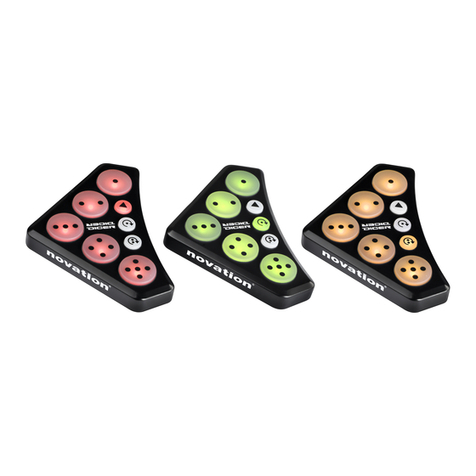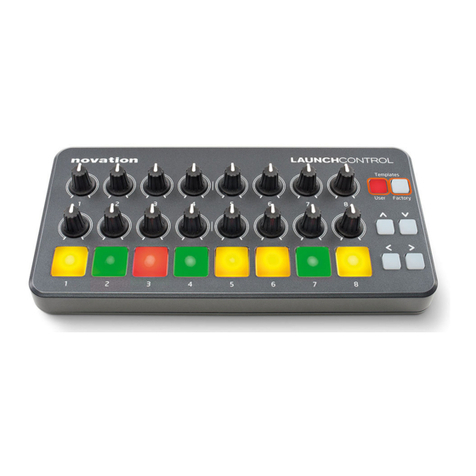
SLMKII MIDI Programmer’s Reference
Page 6 of 33
3. Automap CC Messages
BF VV
All ( ontinuous- ontroller) MIDI messages used, to and from the unit in
Automap mode follow the above format.
MIDI- HANNEL NUMBER: All Automap messages are sent on MIDI channel #16
ie ‘BF’ (Ableton uses MIDI channel #1 ie ‘B0’.)
ONTROLLER NUMBER: Generally, the number indicates a specific SLMKII
ontrol or , in some cases, a particular control group. numbers range from 00h to
7Fh.
Please note: the protocol control organization, does NOT follow any ‘standard’
MIDI allocations – instead, it is generally a linear allocation of numbers of
particular SLMKII control groups eg all the Pot s are grouped together.
ONTROL VALUE: The value for a particular message varies, depending on the
type of control and the direction of the message – ie to or from the unit. Some
messages have a continuous range of 00-7Fh (eg pots and sliders); some have 00h or
01h, to indicate OFF or ON; some use bit-6 to indicate OFF or ON, or even ‘touched, of
‘untouched’ – some values have single and/or multiple bit fields.
See the individual sections for the exact value usage.
SLMKII PORTS USAGE:
PORT1: This port should be used normally for Keyboard Note/Aftertouch/Pitch-
Bend etc messages. Note: Messages received by the unit can be made to route directly,
across the unit, to the M1-Out Port. (Useful for passing on MIDI-clocks to MIDI
instruments attached to the MIDI port.)
PORT2: This port can be used for MIDI-clock messages to the unit, or to a dedicated
P application – such as Ableton Live
PORT3: Generally, Automap messages are sent and received on this ‘hidden’ port
of the SLMKII . The Automap Template is configured to send control events out on the
hidden port. Some events, such as the Speed-dial, Transport-lock events etc are ‘hard-
coded’ to use the hidden port only.
Automap messages should be sent to the ‘hidden’ port, but in general, can be sent to
one of the exposed MIDI ports of the unit – and have the same effect.





























